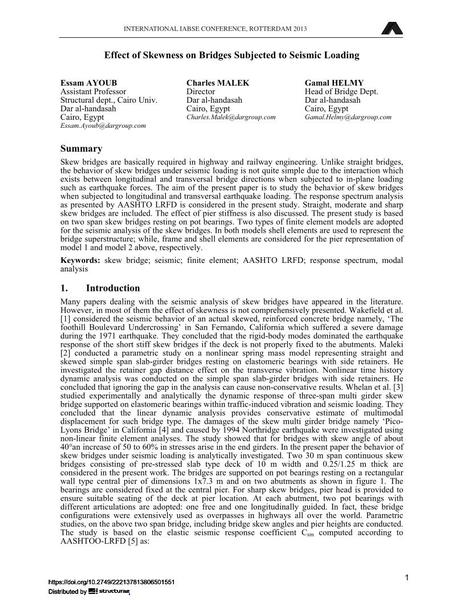Effect of Skewness on Bridges Subjected to Seismic Loading

|
|
|||||||||||
Détails bibliographiques
| Auteur(s): |
Essam Ayoub
Charles Malek Gamal Helmy |
||||
|---|---|---|---|---|---|
| Médium: | papier de conférence | ||||
| Langue(s): | anglais | ||||
| Conférence: | IABSE Conference: Assessment, Upgrading and Refurbishment of Infrastructures, Rotterdam, The Netherlands, 6-8 May 2013 | ||||
| Publié dans: | IABSE Conference, Rotterdam, May 2013 | ||||
|
|||||
| Page(s): | 344-345 | ||||
| Nombre total de pages (du PDF): | 7 | ||||
| Année: | 2013 | ||||
| DOI: | 10.2749/222137813806501551 | ||||
| Abstrait: |
Skew bridges are basically required in highway and railway engineering. Unlike straight bridges, the behavior of skew bridges under seismic loading is not quite simple due to the interaction which exists between longitudinal and transversal bridge directions when subjected to in-plane loading such as earthquake forces. The aim of the present paper is to study the behavior of skew bridges when subjected to longitudinal and transversal earthquake loading. The response spectrum analysis as presented by AASHTO LRFD is considered in the present study. Straight, moderate and sharp skew bridges are included. The effect of pier stiffness is also discussed. The present study is based on two span skew bridges resting on pot bearings. Two types of finite element models are adopted for the seismic analysis of the skew bridges. In both models shell elements are used to represent the bridge superstructure; while, frame and shell elements are considered for the pier representation of model 1 and model 2 above, respectively. |
||||
